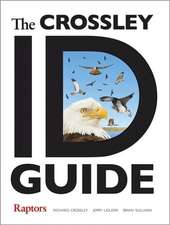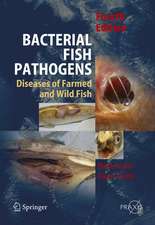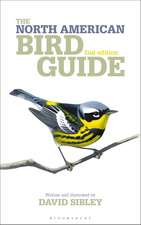Biomechanics of Feeding in Vertebrates: Advances in Comparative and Environmental Physiology, cartea 18
V. L. Bels Contribuţii de P. Aerts M. Chardon, P. Vandewalle Contribuţii de H. Berkhoudt, A.W. Crompton, F. de Vree, P. Dullemeijer, J.-P. Ewert, T.H. Frazzetta, C. Gans, S.W. Herring, A. Huysseune, K.V. Kardong, G.V. Lauder, S.M. Reilly, E. Schürg-Pfeiffer, W.W. Schwippert, D. N. Stern, J.C. Vanden Berge, W. Verraes, A. Weerasuriya, W.A. Weijs, C.B. Wood, G.A. Zweersen Limba Engleză Paperback – noi 2012
Din seria Advances in Comparative and Environmental Physiology
- 15%
 Preț: 644.63 lei
Preț: 644.63 lei - 15%
 Preț: 643.99 lei
Preț: 643.99 lei - 18%
 Preț: 1384.56 lei
Preț: 1384.56 lei - 15%
 Preț: 639.59 lei
Preț: 639.59 lei - 5%
 Preț: 725.79 lei
Preț: 725.79 lei - 15%
 Preț: 641.85 lei
Preț: 641.85 lei - 15%
 Preț: 634.68 lei
Preț: 634.68 lei - 15%
 Preț: 639.25 lei
Preț: 639.25 lei - 15%
 Preț: 638.76 lei
Preț: 638.76 lei - 15%
 Preț: 588.65 lei
Preț: 588.65 lei - 15%
 Preț: 639.73 lei
Preț: 639.73 lei - 15%
 Preț: 640.71 lei
Preț: 640.71 lei - 15%
 Preț: 641.38 lei
Preț: 641.38 lei - 15%
 Preț: 639.08 lei
Preț: 639.08 lei - 15%
 Preț: 640.06 lei
Preț: 640.06 lei - 5%
 Preț: 712.46 lei
Preț: 712.46 lei - 5%
 Preț: 1092.99 lei
Preț: 1092.99 lei - 15%
 Preț: 646.94 lei
Preț: 646.94 lei - 15%
 Preț: 651.34 lei
Preț: 651.34 lei - 15%
 Preț: 640.06 lei
Preț: 640.06 lei - 15%
 Preț: 649.71 lei
Preț: 649.71 lei - 15%
 Preț: 638.57 lei
Preț: 638.57 lei - 15%
 Preț: 634.49 lei
Preț: 634.49 lei - 15%
 Preț: 640.71 lei
Preț: 640.71 lei
Preț: 392.75 lei
Nou
Puncte Express: 589
Preț estimativ în valută:
75.16€ • 81.61$ • 63.14£
75.16€ • 81.61$ • 63.14£
Carte tipărită la comandă
Livrare economică 22 aprilie-06 mai
Preluare comenzi: 021 569.72.76
Specificații
ISBN-13: 9783642633997
ISBN-10: 3642633994
Pagini: 376
Ilustrații: XII, 363 p.
Dimensiuni: 155 x 235 x 20 mm
Greutate: 0.53 kg
Ediția:Softcover reprint of the original 1st ed. 1994
Editura: Springer Berlin, Heidelberg
Colecția Springer
Seria Advances in Comparative and Environmental Physiology
Locul publicării:Berlin, Heidelberg, Germany
ISBN-10: 3642633994
Pagini: 376
Ilustrații: XII, 363 p.
Dimensiuni: 155 x 235 x 20 mm
Greutate: 0.53 kg
Ediția:Softcover reprint of the original 1st ed. 1994
Editura: Springer Berlin, Heidelberg
Colecția Springer
Seria Advances in Comparative and Environmental Physiology
Locul publicării:Berlin, Heidelberg, Germany
Public țintă
ResearchCuprins
1 Functional Properties of the Feeding Musculature.- 1 Introduction.- 2 Functional Properties of Individual Muscle Fibers.- 3 Fiber Types and Contractile Properties in Vertebrate Feeding Muscles.- References.- 2 Feeding Mechanisms in Sharks and Other Elasmobranchs T.H Frazzetta.- 1 Chondrichthyian Fishes.- 2 Elasmobranchs.- 3 The Shark Jaw Apparatus.- 4 Feeding behavior.- 5 Morphomechanics and function.- 6 Other Elasmobranchs.- 7 Conclusions.- References.- 3 The Pharyngeal Apparatus in Teleost Feeding.- 1 Introduction.- 2 Morphology.- 3 Role of the Pharyngeal Apparatus in Food Processing.- 4 Development of the Pharyngeal Jaws.- 5 Polymorphism and Plasticity of the Pharyngeal Jaw Apparatus.- 6 Concluding Remarks.- References.- 4 Feeding in Tetrapods.- 1 Introduction.- 2 Problems and Solutions for Terrestrial Feeding.- 3 Amphibians: Conflict and Prey Ingestion.- 4 Reptilian and Mammalian Prey Ingestion.- 5 Teeth, Crushing and Mastication.- 6 The Adductor Muscles and Their Action Patterns.- 7 Cycles.- 8 Overview.- References.- 5 Sensorimotor Processes That Underlie Feeding Behavior in Tetrapods.- 1 Behavior Patterns Related to Feeding.- 2 Definitions Referring to “Sensori-”, “Motor-”, and “Command-”.- 3 The Motor Part of Prey Snapping in Toads.- 4 The Feature-Analyzing Part of Prey Catching.- 5 A Concept of a Neuronal Circuit for the Tongue Flip.- References.- 6 Amphibian Feeding Behavior: Comparative Biomechanics and Evolution.- 1 Introduction.- 2 Overview of Feeding Mechanics in Fishes.- 3 Salamander Feeding Mechanics.- 4 Frog Feeding Mechanics.- 5 Comparative Analysis of Amphibian Feeding.- 6 Recommendations and Future Directions.- References.- 7 Biomechanics of the Hyolingual System in Squamata.- 1 Introduction.- 2 Functional and Biomechanical Studies ofthe Hyolingual System.- 3 Evolutionary Comparison of Hyolingual Biomechanics 234 References.- 8 Behavioral Mechanisms of Avian Feeding.- 1 Introduction.- 2 General Food Acquisition Mechanism: Pecking.- 3 Specific Food-Handling Mechanisms: Husking and Storage.- 4 Specific Food Acquisition Mechanisms.- 5 Sensory Control and Motor Patterning.- 6 Principles of Avian Food Acquisition.- References.- 9 Evolutionary Approach of Masticatory Motor Patterns in Mammals W.A Weijs.- 1 Introduction and Scope.- 2 The Evolutionary Development of the Mammalian Jaw Apparatus.- 3 Mammalian Jaw Muscles and Feeding Cycles: Definitions.- 4 Feeding in Primitive Mammals.- 5 Bats.- 6 Primates.- 7 Carnivores.- 8 Ungulate Grinding Type.- 9 Rodents.- 10 Discussion.- References.- 10 Differential Wear of Enamel: A Mechanism for Maintaining Sharp Cutting Edges A.W Crompton, C.B Wood and D.N Stern.- 1 Introduction.- 2 Material and Methods.- 3 Results.- 4 Discussion.- References.- Conclusion: A General Theory for Feeding Mechanics?.











